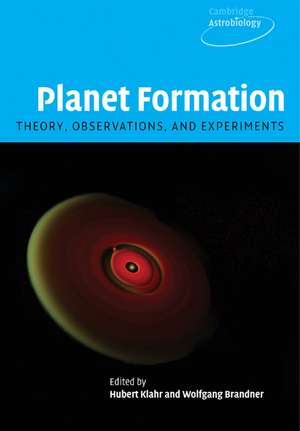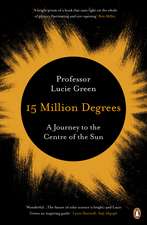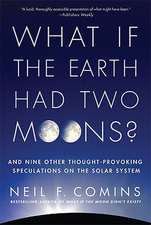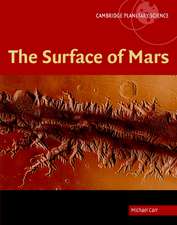Planet Formation: Theory, Observations, and Experiments: Cambridge Astrobiology, cartea 1
Editat de Hubert Klahr Autor Wolfgang Brandneren Limba Engleză Paperback – 16 feb 2011
Preț: 378.19 lei
Nou
Puncte Express: 567
Preț estimativ în valută:
72.38€ • 75.28$ • 59.75£
72.38€ • 75.28$ • 59.75£
Carte tipărită la comandă
Livrare economică 15-29 aprilie
Preluare comenzi: 021 569.72.76
Specificații
ISBN-13: 9780521180740
ISBN-10: 0521180740
Pagini: 320
Dimensiuni: 170 x 244 x 17 mm
Greutate: 0.51 kg
Editura: Cambridge University Press
Colecția Cambridge University Press
Seria Cambridge Astrobiology
Locul publicării:Cambridge, United Kingdom
ISBN-10: 0521180740
Pagini: 320
Dimensiuni: 170 x 244 x 17 mm
Greutate: 0.51 kg
Editura: Cambridge University Press
Colecția Cambridge University Press
Seria Cambridge Astrobiology
Locul publicării:Cambridge, United Kingdom
Cuprins
1. Historical notes on planet formation Bodenheimer; 2. The formation and evolution of planetary systems Bouwman et al.; 3. Destruction of protoplanetary disks by photoevaporation Richling, Hollenbach and Yorke; 4. Turbulence in protoplanetary accretion disks Klahr, Rozyczka, Dziourkevitch, Wunsch and Johansen; 5. The origin of solids in the early solar system Trieloff and Palme; 6. Experiments on planetesimal formation Wurm and Blum; 7. Dust coagulation in protoplanetary disks Henning, Dullemond, Wolf and Dominik; 8. The accretion of giant planet cores Thommes and Duncan; 9. Planetary transits: direct vision of extrasolar planets Lecavelier des Etangs and Vidal-Madjar; 10. The core accretion - gas capture model Hubickyj; 11. Properties of exoplanets Marcy, Fischer, Butler and Vogt; 12. Giant planet formation: theories meet observations Boss; 13. From hot Jupiters to hot Neptures … and below Lovis, Mayor and Udry; 14. Disk-planet interaction and migration Masset and Kley; 15. The Brown Dwarf - planet relation Bate; 16. From astronomy to astrobiology Brandner; 17. Overview and prospective Lin.
Recenzii
Review of the hardback: ' ... carefully organized text ... represents a snapshot of the state of the art of the modern quest for the origins of the worlds. ... a definitive text for the shelves of researchers, students, and interested bystanders that should prove to be of considerable longevity. Even Slartibartfast and Douglas Adams, to whom this volume is dedicated, might find it handy.' Science
Review of the hardback: 'This book brings together a wide range of planet-formation papers … written by some of the leading academics in planet-formation research. … the book covers the main research areas one would expect … as a concise reference and introduction to planet-formation research.' The Observatory
Review of the hardback: ' … a very welcome contribution, helping the dynamicist understand the hazy limit between low-mass stars and planets, as well as discussing their differences in observational characteristics and probable formation process … this book is recommended for those researchers who, although fluent in Celestial Mechanics, wish to expand their knowledge on the physical aspects of cosmogony before embarking in this multi-disciplinary field.' Celestial Mechanics and Dynamical Astronomy
Review of the hardback: 'This book brings together a wide range of planet-formation papers … written by some of the leading academics in planet-formation research. … the book covers the main research areas one would expect … as a concise reference and introduction to planet-formation research.' The Observatory
Review of the hardback: ' … a very welcome contribution, helping the dynamicist understand the hazy limit between low-mass stars and planets, as well as discussing their differences in observational characteristics and probable formation process … this book is recommended for those researchers who, although fluent in Celestial Mechanics, wish to expand their knowledge on the physical aspects of cosmogony before embarking in this multi-disciplinary field.' Celestial Mechanics and Dynamical Astronomy
Descriere
This 2006 book summarises understanding of planet formation processes, and addresses major open questions and research issues.
















